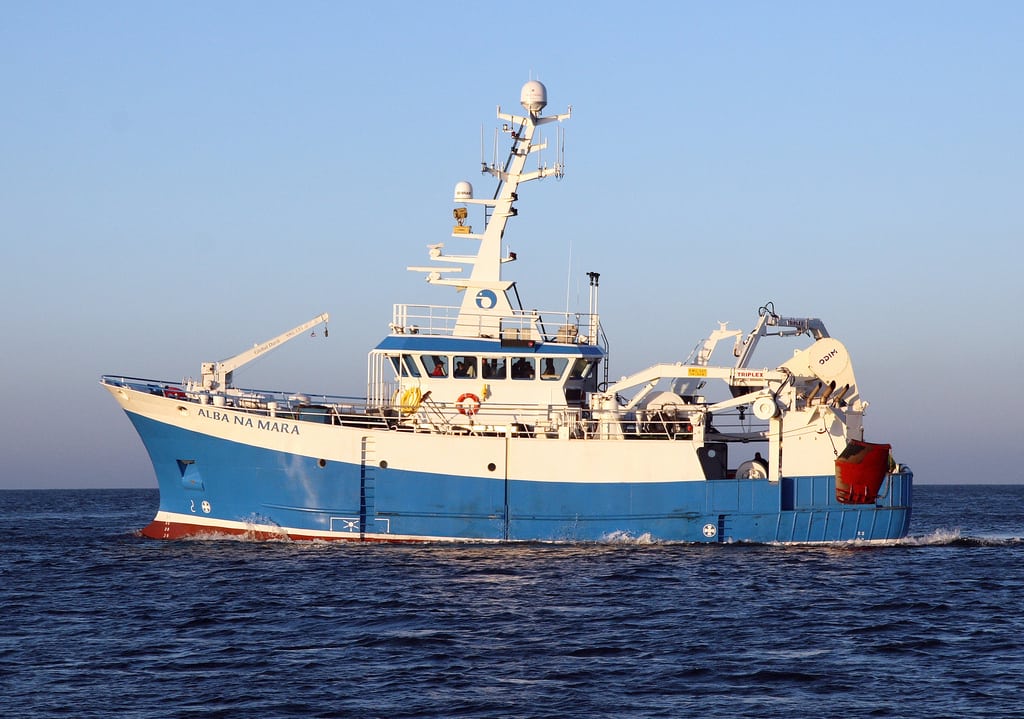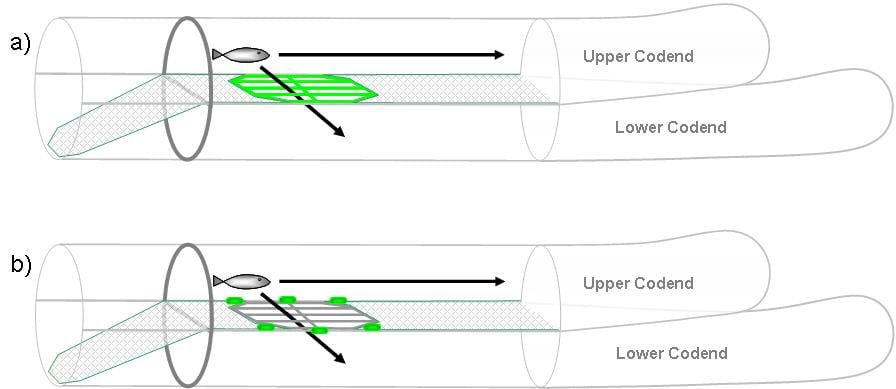Marine
Bright lights; Big fish trials
March 2, 2018 by Marine Directorate Communications No Comments | Category Collaborations, Fisheries, Marine Directorate general, Marine Directorate Science, Marine Directorate Surveys, Marine Litter, Research Vessel Surveys
Survey: 0318A
Duration: 8-22 March 2018
Equipment:
- BT 201 Prawn net – rigged with separator grid and two 80mm codends;
- Trawl doors, sweeps, bridles, backstrops and pennants;
- Spare netting and twine;
- Safety-Net Technologies light unit;
- PSL5000 light unit x 2;
- Lindgren Pitman Electralume light x10;
- 4 x 10m side emitting light cables;
- Battery pods;
- Video Cameras;
- Flashback recorders and housing;
- Pyramid camera frames;
- TechnoSmart AXY tilt sensor;
- Scanmar units – wing, door and height;
- Catch bins and sorting table; and
- 4 x fish traps and associated lines, weights and marker dhan.
Objectives:
- Investigate whether light influences fish behaviour in the extension of the trawl.
- Obtain video footage of the separator lighting grid.
Procedure:
Equipment will be loaded onto MRV Alba na Mara at Fraserburgh on 5 March 2018, where the trawl will be rigged onto the net drum. Scientific staff will join Alba around 08:30 on 8 March and will then leave harbour shortly after and steam, weather permitting, to the Dog Hole fishing grounds approximately 9 nm east of Aberdeen. A number of short hauls will be carried out to ensure the separator grid in the trawl is rigged correctly through observations with video cameras mounted on the trawl and analysis of a tilt sensor mounted on the grid. After the rigging trials are complete fish behaviour trials will commence. Alba might need to change fishing grounds if fish species composition and size is not suitable. Alba will return to Fraserburgh on the evening of 21 March to unload equipment and scientific personnel the next day.
Fish Behaviour Trials:
The BT201 prawn trawl is fitted with a panel of netting that diverts all the fish into the upper half of the extension and then runs between the selvedges to the separate 80 mm codends. Fish can pass through a grid mounted in the central panel, to be retained in the lower codend (Figure 1). There will be two light fibre lines permanently attached to the grid, one illuminating the upper half and one illuminating the lower half of the grid. An LED light unit and 12V battery pack that illuminates the fibre lines will be mounted on the port selvedge behind the grid. The LED light unit will emit green light and hauls will be conducted either with the light on constantly or flashing at 4 Hz. Grid illumination will also be tested with six Lindgren Pitman Electralume green lights attached around the grid. These self-contained light units will provide a constant light. The grid will also be fished without any lights to show the standard reaction to the grid. Hence four lighting variables will be tested during the trials (light fibre constant, light fibre flashing, Electralume constant, no light).
The light units and grid cannot be wound onto the net drum as it could damage the equipment. During hauling the net will be wound onto the drum up to the grid, then the power block used to bring the codends aboard. Large bins will be used on deck to receive and store the catch from the separate codends. The catch will be sorted into key species, weighed and individual total length measurements recorded.
The working hours will be approximately 0700 to 1900 hours for the behaviour trials, so that all hauls will be conducted in daylight. Around four fishing hauls will be carried out each day, with the last haul being heaved up at 1700-1730 hours. Hauls will be 90 minutes long initially, with the potential to be adjusted depending on the catch volume. The net will be towed at three knots with Scanmar units used to monitor wing spread, door spread, and headline height during each haul.
Live Fish Capture:
If time allows near the end of the survey. Fish traps will be deployed to see whether it’s possible to obtain live healthy fish for tank based trials back at the laboratory. The traps will be deployed for over eight hours then slowly brought to the surface to reduce decompression injuries. The catch will be sorted on-board with healthy haddock, whiting and cod being placed in tanks of aerated seawater. The fish will then be transferred to the lab aquarium once transported back from the harbour.
Marine Litter:
Any marine litter brought onboard during trawling operations will be documented before being placed into “KIMO Fishing for Litter” bags. At the end of the survey the bags will be deposited safely on the quayside to be collected for disposal.
Figure 1: The netting panel separator and grid arrangement with a) the light fibre and b) the Electralume lighting.
Tags: Alba na Mara, Dog Hole fishing ground, fish behaviour, fish trials, fisheries, marine litter, research, trawls




Leave a comment